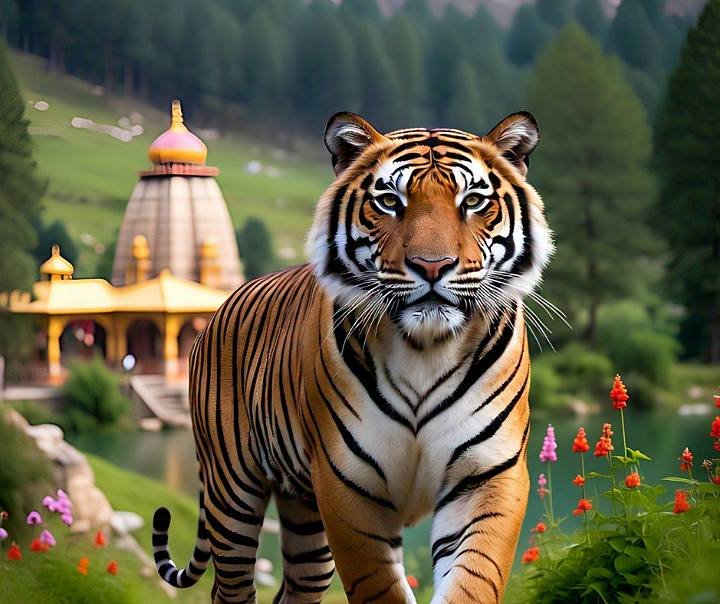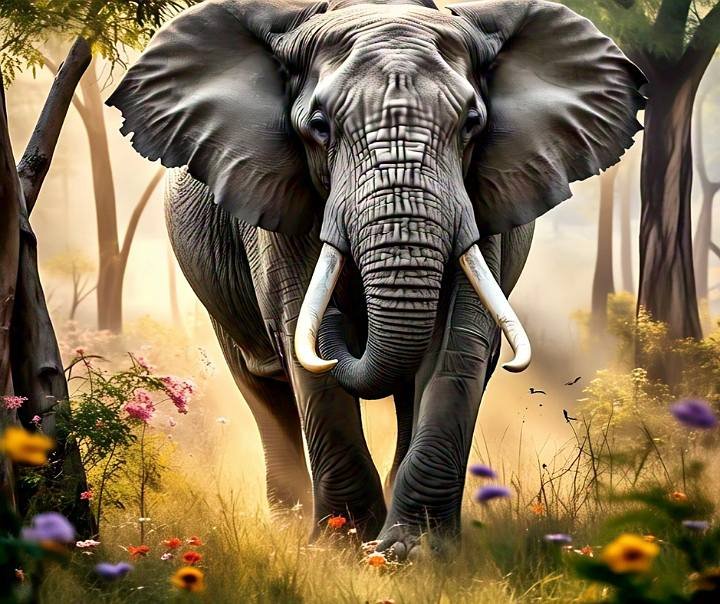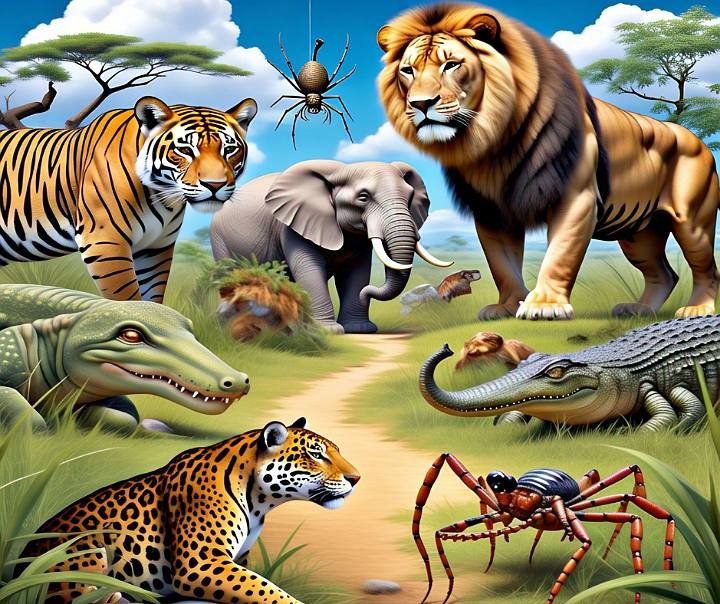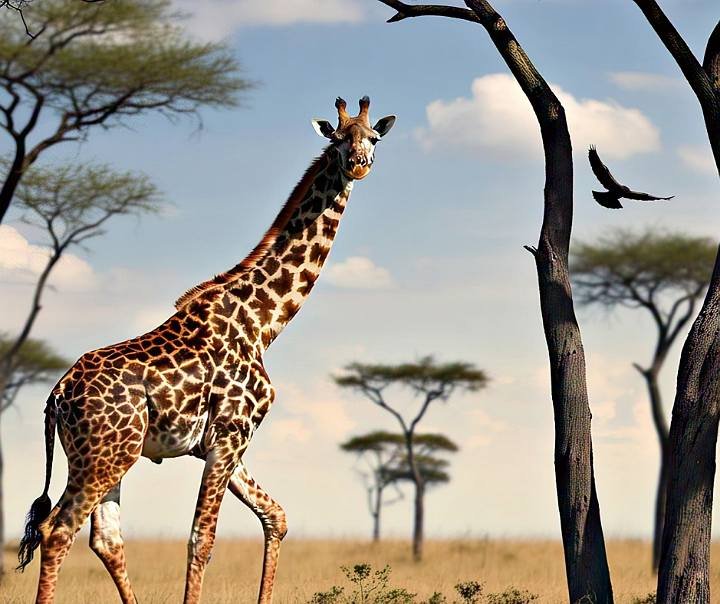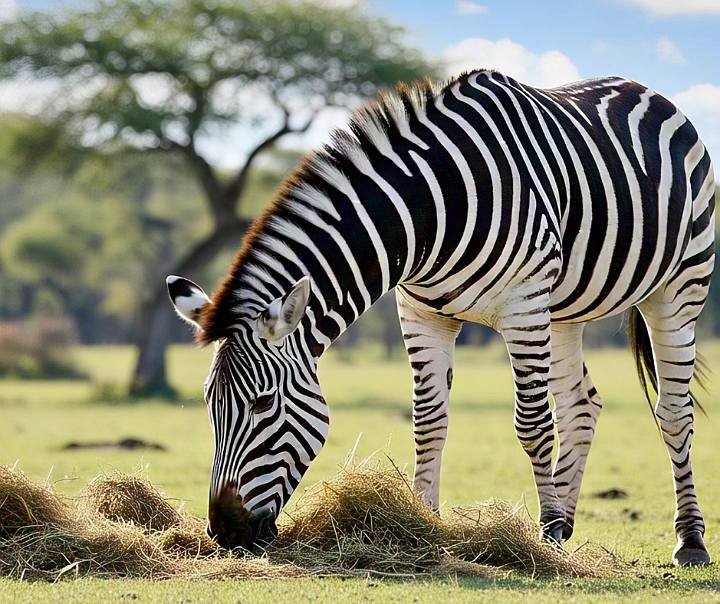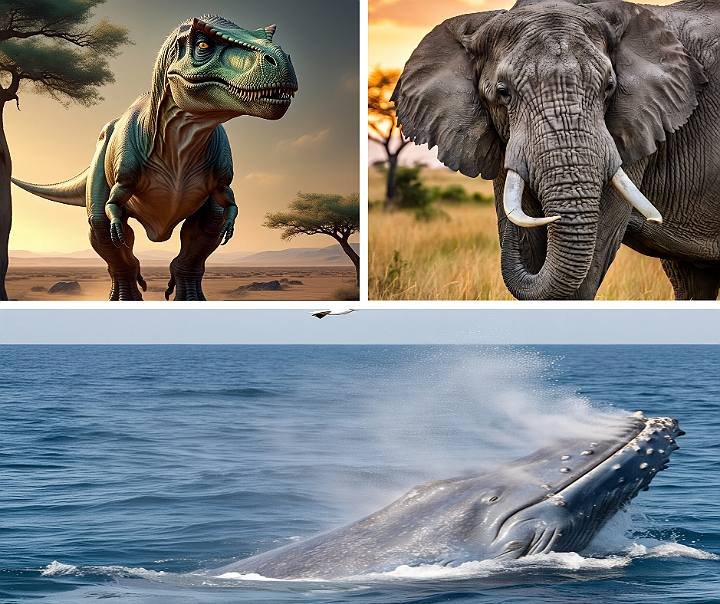The Lion: King of the Wild
The lion (Panthera leo), fondly called the “King of the Jungle,” is a symbol of strength, majesty, and social harmony. With its thunderous roar and iconic mane, the lion commands respect in the animal kingdom. In this engaging and unique post, we dive deep into the lion’s life—its birth, habitat, diet, hunting techniques, species, conservation efforts, and much more. Packed with fascinating facts and actionable insights, this post will take you on an unforgettable journey into the world of lions. Let’s roar into it!
1. The Birth of a Lion: A Tiny Monarch
A lioness gives birth to 2-4 cubs after a gestation period of about 110 days. These cubs are born tiny (1-2 kg), blind, and entirely dependent on their mother.
- Cubs’ Early Days: The lioness hides her cubs in dense vegetation or secluded spots to protect them from predators like hyenas or leopards. For the first 6-8 weeks, cubs rely solely on their mother’s milk.
- Growing Up: By 6-8 weeks, cubs join the pride (group) and start eating meat. They reach maturity around 2-3 years. Male lions are often expelled from the pride at this age to find their own territory or form coalitions with other males.
Fun Fact: Lion cubs playfully practice hunting skills, much like children learning through games!
Learn More: National Geographic – Lion Cubs
2. The Lion’s Habitat: A Kingdom of Grasslands
Lions primarily inhabit Africa and a small pocket in India. They thrive in open savannas, grasslands, and sometimes semi-arid regions where prey and water are abundant.
- Africa’s Stronghold: The majority of lions roam Africa’s savannas, with key populations in Serengeti National Park (Tanzania), Kruger National Park (South Africa), and Okavango Delta (Botswana).
- India’s Pride: The Asiatic lion, a distinct subspecies, is found only in Gir National Park, Gujarat, India—a testament to successful conservation efforts.
- Habitat Preferences: Lions prefer areas near water sources, as their prey (zebras, antelopes) congregate there, making hunting easier.
Key Insight: Lions are highly adaptable but face habitat loss due to human encroachment.
Learn More: WWF – Lion Habitat
3. The Lion’s Diet: A Carnivore’s Feast
Lions are obligate carnivores, meaning their diet consists entirely of meat. They target large mammals but can adapt to smaller prey when necessary.
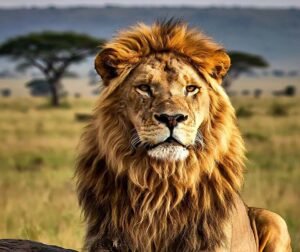
- Favorite Prey: Lions hunt zebras, wildebeests, buffaloes, antelopes, and occasionally giraffes. In lean times, they may eat smaller animals like hares or birds.
- Scavenging: Lions are opportunistic and often steal kills from other predators like cheetahs or hyenas.
- Feeding Capacity: A single lion can consume 15-20 kg of meat in one sitting but can go days without food.
Intriguing Fact: In a pride, males eat first, followed by cubs, and then lionesses—reflecting the pride’s hierarchy.
Learn More: San Diego Zoo – Lion Diet
4. The Art of Hunting: Teamwork Makes the Dream Work
Lions are the only truly social big cats, and their hunting strategy showcases their remarkable teamwork. They hunt primarily in prides, making them formidable predators.
- Hunting Tactics:
- Lionesses are the primary hunters, leveraging their speed, agility, and coordination.
- They use ambush tactics or short, powerful sprints to catch prey. Lions can reach speeds of 80 km/h but tire quickly.
- Group hunting allows them to take down large animals like buffaloes or even young elephants.
- Male Lions’ Role: Males protect the pride and its kills, fending off rival predators like hyenas or other lions.
Surprising Stat: Lions succeed in only 20-30% of hunts, meaning they often go hungry despite their strength.
Learn More: Smithsonian – Lion Hunting
5. Lion Subspecies: Two Royal Lineages
Lions are divided into two main subspecies, each with unique traits:
- African Lion (Panthera leo leo):
- Found across sub-Saharan Africa.
- Males have large, bushy manes that signify dominance and attract mates.
- Population: Approximately 20,000-30,000, declining due to habitat loss and poaching.
- Asiatic Lion (Panthera leo persica):
- Exclusive to India’s Gir National Park.
- Smaller manes and a distinct belly fold distinguish them from African lions.
- Population: Around 600-700, increasing thanks to conservation efforts.
Notable Difference: Asiatic lions tend to form smaller prides and are slightly smaller than their African cousins.
Learn More: IUCN Red List – Lion
6. The Social Structure: A Pride’s Power
Lions are uniquely social, living in prides that function like tight-knit families. A typical pride includes:
- 2-4 adult males, several lionesses, and their cubs.
- Lionesses handle hunting and cub-rearing, while males defend the pride’s territory from intruders.
- Young males are often forced out at 2-3 years to avoid competition with dominant males. These “nomadic” lions may live alone or form coalitions.
Unique Trait: Lionesses in a pride are often sisters or cousins, creating a strong bond that ensures cub survival.
Fun Fact: Prides can have up to 40 members, though smaller groups are more common in Asiatic lions.
Learn More: BBC Wildlife – Lion Social Structure
7. Threats to Lions: A Kingdom in Peril
Lions are listed as Vulnerable on the IUCN Red List, with their populations declining due to multiple threats:
- Habitat Loss: Conversion of savannas into farmland or urban areas reduces lion territories.
- Human-Wildlife Conflict: Lions attacking livestock near villages often leads to retaliatory killings.
- Poaching: Lions are hunted for their skins, bones, and body parts, used in traditional medicine or as trophies.
- Trophy Hunting: Legal and illegal hunting for sport threatens lion populations in some regions.
- Climate Change: Altered rainfall patterns affect prey availability, impacting lion survival.
Critical Stat: In the last century, lion populations have declined by over 80%, with fewer than 30,000 remaining in the wild.
8. Conservation Efforts: Saving the King
Global and local efforts are underway to protect lions and ensure their survival:
- Protected Areas: National parks like Serengeti, Kruger, and Gir provide safe havens for lions.
- Community Engagement: Programs educate locals about coexisting with lions, reducing conflict. For example, Lion Guardians in East Africa trains Maasai warriors to monitor and protect lions.
- Anti-Poaching Laws: Stricter regulations in many countries curb illegal hunting.
- Conservation Success: India’s Gir National Park has boosted Asiatic lion numbers from near extinction to over 600 through dedicated efforts.
- Technology: GPS collars and drones help track lion movements and prevent human-wildlife conflicts.
How You Can Help: Support organizations like WWF, Panthera, or Lion Recovery Fund through donations or spreading awareness. Avoid products linked to poaching, such as lion bone medicines.
Learn More: Panthera – Lion Conservation
9. Fascinating Lion Facts to Roar About
- A lion’s roar can be heard up to 8 km away, signaling its dominance across the savanna.
- Lions sleep or rest for 16-20 hours a day, earning the nickname “lazy kings.”
- In the wild, lions live for 10-14 years, but in captivity, they can reach 20 years.
- Lions can leap up to 36 feet in a single bound, showcasing their athletic prowess.
- The mane of a male lion darkens with age, signaling health and strength to rivals and mates.
10. Cultural Significance: Lions in Human History
Lions hold a special place in cultures worldwide:
- Symbolism: Lions represent courage, royalty, and strength in cultures from ancient Egypt to modern-day logos (e.g., MGM Studios’ roaring lion).
- Mythology: In African folklore, lions are often revered as protectors or deities. In Hinduism, the goddess Durga rides a lion, symbolizing power.
- Art and Literature: From The Lion King to ancient cave paintings, lions inspire awe and creativity.
Cultural Gem: The Narasimha avatar of Lord Vishnu in Hinduism is a half-man, half-lion figure, embodying divine protection.
Learn More: History – Lions in Culture
Conclusion: Long Live the King
Lions are more than just animals—they are keystone species that maintain the balance of ecosystems. Their declining numbers remind us of our responsibility to protect nature. By supporting conservation efforts, raising awareness, and respecting wildlife habitats, we can ensure that the “King of the Wild” continues to reign for generations to come.
Join the Fight: Share this post, donate to lion conservation, or visit a national park responsibly to witness these majestic creatures in their natural glory. Together, let’s keep the lion’s roar echoing across the wild!
For More Information:
Your Turn: What fascinates you most about lions—their roar, social bonds, or hunting prowess? Drop a comment below! If you’d like to dive deeper into a specific aspect (e.g., lion cub behavior or conservation challenges), let me know!
Tiger : reign as one of natures
Author’s Note: This post is crafted to celebrate the lion’s grandeur while inspiring action to protect it. If you enjoyed this journey, share it with fellow wildlife lovers and help spread the word about saving the king of the wild! 🦁
